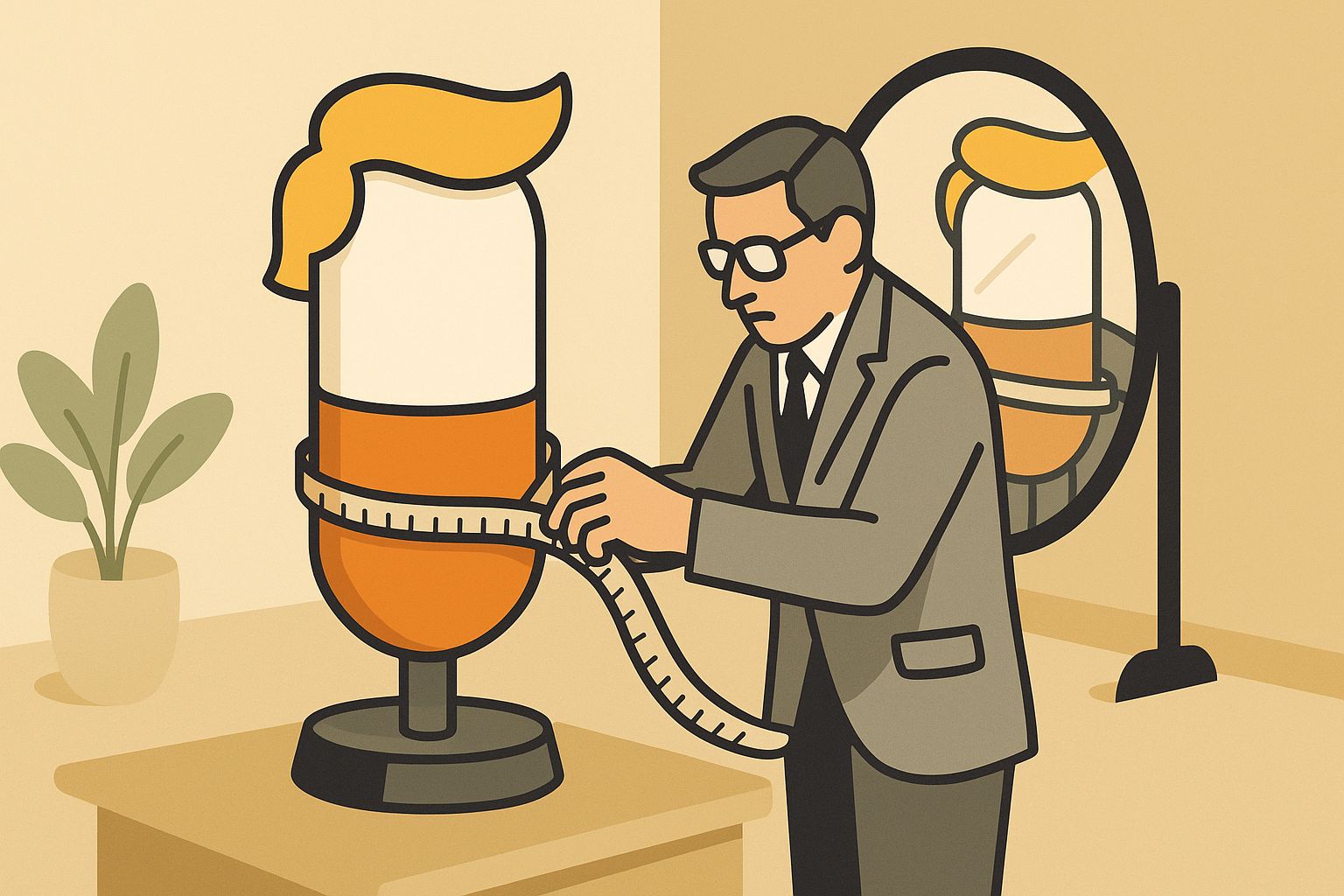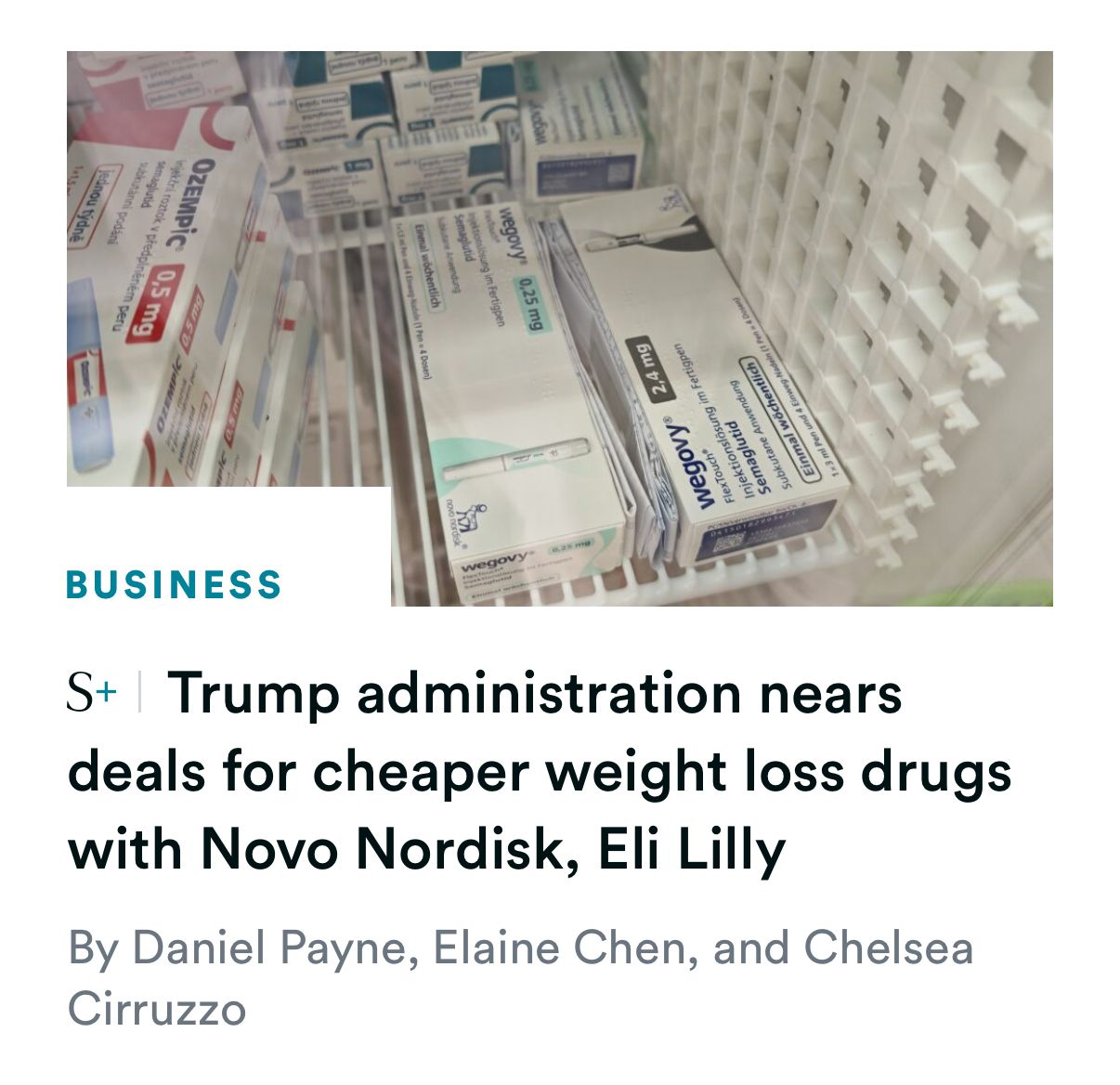TrumpRx Trims the Fat

I’m writing this just hours after reading the headlines: the Trump administration is reportedly finalizing a deal with Eli Lilly and Novo Nordisk to sell their blockbuster GLP-1 drugs—Ozempic, Wegovy, and Zepbound—for around $149 to $299 a month through the new TrumpRx platform.

STAT News
I don’t have all the details. No one does. But like every pharmacist in America, I’m trying to make sense of what this could mean for patients, for pharmacies, and for the future of drug pricing.
On paper, it sounds enormous. TrumpRx 2.0 — cheaper injectables, expanded access, and a promise that Americans will finally pay the same as Europe. It’s the kind of announcement that dominates cable news and campaign ads.
But in pharmacy, we’ve learned to read the fine print before celebrating.

What We Know So Far
According to STAT News and The Wall Street Journal, the Trump administration is close to securing a deal with Lilly and Novo to lower the direct-to-consumer prices of their GLP-1s while also expanding Medicare and Medicaid coverage to include these drugs for weight loss.
The arrangement reportedly includes several elements:
Low-dose versions of Ozempic, Wegovy, and Zepbound offered around $149 through TrumpRx
Medicare and Medicaid coverage expansion, ending the long-standing exclusion of weight-loss drugs for covered patients
An FDA “priority-review voucher” for Lilly’s upcoming oral GLP-1, Orforglipron, as part of the negotiation
If finalized, this would represent one of the most politically significant health-care deals of Trump’s second term.
And yet, as STAT notes, the “true impacts remain unknown,” and experts are already warning the plan is unlikely to significantly lower overall drug costs.
That caveat alone should give everyone pause.

My First Reaction
If patients can truly get GLP-1s for $150 to $300, that’s undeniably good news for affordability.
But let’s be real — Pharma never cuts prices for fun.
These are the most profitable drugs ever made. You don’t suddenly slash prices on billion-dollar assets because the president asked nicely. There’s always a trade-off somewhere in the ledger.
Just hypothesizing here… maybe the companies get expanded Medicare and Medicaid coverage that offsets their price concessions through increased volume. Maybe they secure favorable tariff treatment or relaxed U.S. manufacturing requirements. Maybe the administration quietly promised to shut down compounding of GLP-1s, removing one of their biggest ongoing threats.
All of those would make financial sense.
But there’s one part of this story that makes absolutely none to me.

The $150 Orforglipron Question
The claim that Eli Lilly’s upcoming oral GLP-1, Orforglipron, will launch at $150 on TrumpRx is the part I simply can’t wrap my head around.
It’s not an exaggeration to say this drug could become the most successful pharmaceutical in history.
I wrote about it in Wall Street’s Loss Could Be GLP-1’s Biggest Win Yet — a pill that delivers the same weight-loss results as the injectables without a needle, refrigeration, or stigma.
If injectables were the GLP-1 inflection point, Orforglipron is the parabolic curve.
So the idea that Lilly would voluntarily launch its crown jewel at a massive discount strains every rule of pharmaceutical economics.
They spent billions developing this molecule, billions more building out the supply chain, and they hold the patents that will define the next decade of metabolic medicine.
There is no universe where Orforglipron debuts at $150 unless the company is getting something seismic in return.
A guaranteed government purchasing agreement?
Regulatory fast-tracking?
A formal ban on compounded GLP-1s?
All of the above?
If this price really materializes, it won’t be a discount — it will be a deal with invisible fine print.
That’s what scares me most.

Why This Might Not Actually Lower Prices
Even if the $149 number proves real, it’s unlikely to transform drug pricing overall. It doesn’t touch the root of the problem.
List prices will remain sky-high. Manufacturers can maintain the illusion of affordability while preserving their rebate structure with PBMs. The $150 TrumpRx price might exist only for cash-pay patients who buy through the platform — essentially a marketing showcase, not a market correction.
Most insured patients will still use insurance because copays will be lower than $150-$300. Any new coverage expansions will flow through the same PBM-controlled networks that already extract billions in rebates and fees.
As STAT put it, the true financial impact “remains unknown.”
That’s polite journalism-speak for: Don’t hold your breath.
This might expand access, but expanding access isn’t the same as lowering cost.
And you better believe Lilly and Novo have done extensive research proving they’ll still come out absurdly profitable despite the appearance of major concessions to Trump.

The FDA Fast-Pass Problem
The part of the reported deal that worries me most — besides the implausible $150 Orforglipron promise — is the idea of an FDA priority-review voucher being used as political currency.
Normally, a New Drug Application (NDA) approval takes around ten months. That time exists for a reason: data scrutiny, labeling, safety signals, long-term outcomes.
The idea that a company could trade pricing concessions for an accelerated two-month review turnaround undermines the entire purpose of having a neutral, science-driven regulator.
I’m not against efficiency. If the FDA can safely review faster, great. But trading regulatory speed for political capital sets a precedent that’s hard to walk back. Not to mention my skepticism that the freshly gutted FDA is even capable of an NDA approval at their usual speed.
We’ve already seen how easily public trust in medicine erodes. If Americans start believing that drug approvals can be negotiated like trade deals, the damage will be lasting.
Speed is great for almost everything. It’s not always great for medicine.

PBMs: Both the Winners and the Wounded
At first glance, this looks like a blow to PBMs — the middlemen I’ve spent the past year calling the Mafia of Modern Medicine. If millions of patients start getting their brand-name drugs through TrumpRx, it temporarily bypasses the rebate machine they control.
But the core economics don’t change.
List prices stay inflated. Rebates continue.
And because independent pharmacies like mine won’t have access to these direct-to-consumer prices, PBMs can quietly raise reimbursement spreads on other drugs to make up the difference.
In other words: PBMs lose a battle, not the war.
Once again, the middlemen will adapt. And if anything, they’ll find new ways to profit off the chaos.

What It Means for Pharmacies
If you’ve read Pharm-to-Table: Why Big Pharma Wants to Be Your Pharmacy Now, you already know where this is heading.
Every move toward direct-to-consumer sales — whether it’s LillyDirect, NovoCare, or now TrumpRx — shrinks the role of the neighborhood pharmacy.
When manufacturers can prescribe, dispense, and deliver all within their own ecosystem, the checks and balances that keep patients safe start to collapse.
And if TrumpRx becomes the new marketplace for “discounted” brand-name drugs, independent pharmacies will be locked out entirely.
As long as the list prices available to us remain unchanged, we just can’t compete.
Every time a manufacturer sells direct, a community counter goes dark.

The Bigger Picture
Politically, this is brilliant. Trump gets to claim he broke Big Pharma’s pricing wall, and Lilly and Novo get expanded government coverage plus a PR halo for playing along.
It’s the perfect campaign-season symbiosis.
But systemically? The structure of drug pricing remains untouched.
Rebates, PBMs, patent games, and opaque formularies all stay intact.
Even the affordability claim has caveats.
If Orforglipron really does launch at $150, it would mark the first time in modern drug history that a company willingly vaporized billions in potential margin.
That tells me this isn’t altruism. This is Big Pharma.


Final Dose
I don’t know yet how this will play out — none of us do.
Maybe patients really will be able to afford GLP-1s for the first time.
Maybe the Medicare expansion will help millions. I hope that’s true.
But if Drugstore Cowboy has taught you anything, it’s that every price cut comes with fine print.
And when the biggest drug ever made suddenly costs less than your gym membership, somebody is paying the difference — and it’s most likely all of us.
Pharma never loses money.
It just changes who pays the bill.

Alec Wade Ginsberg, PharmD, RPh
4th-Gen Pharmacist | Owner & COO, C.O. Bigelow
Founder, Drugstore Cowboy

